Global Beam Telecom joins Viasat’s ELEVATE
Viasat, Inc. (NASDAQ: VSAT) has announced that Global Beam Telecom has joined the firm’s ELEVATE program.

ELEVATE is a growth program, ecosystem and marketplace for ambitious IoT solution providers, connectivity wholesalers, enablers and OEMs who want to work with Viasat to use its network and footprint to scale new heights. Global Beam Telecom’s portfolio of products and services covers the broad spectrum of secure satellite communications, including fixed and mobile turnkey solutions that enable customers to track, monitor, and control remote assets.
As part of the program, Global Beam Telecom will benefit from access to Viasat’s global L-band network – amplifying its ability to provide Internet of Things (IoT) and satellite connectivity services. Through partnerships with the world’s leading network providers, Global Beam Telecom delivers remote and mobile connectivity solutions to clients across the MENA region.
Founded in 2013, Global Beam Telecom is a satellite telecommunication solutions company based in Abu Dhabi — United Arab Emirates and led by a global team of professionals with extensive SATCOM skills and industry
experience. As part of the program, Global Beam will gain access to Viasat’s broader partner network, creating opportunities to collaborate on additional niche communications solutions for its customers.
Global Beam Telecom serves vertical markets that include...:
Transport: advanced fuel auditing for enhanced efficiency and reduced costs
Mining: remote monitoring and surveillance of mining facilities, with real-time data transfer, to improve decision-making
Aid & NGO: environmental data acquisition and monitoring over satellite to aid disaster response
Workforce: enhance worker safety, security and connectivity in remote locations
Utility: monitor critical infrastructure and reduce unexpected downtime via intelligent alerts on crucial equipment
ELEVATE’s marketplace will help the company attract new customers in locations without reliable connectivity, or those which have mission-critical connectivity needs. For customers, it gives access to a broad choice of satellite connectivity and IoT solutions developed by a range of providers to enhance the efficiency, safety and sustainability of their businesses.
Simon Hawkins, Vice President, Enterprise Commercial & Innovation at Viasat, said,”ELEVATE is the go-to destination for satellite IoT innovation. It’s specifically aimed at helping our partners easily leverage the latest technology to meet some of the greatest challenges the planet faces today. By combining forces with forward thinking companies like Global Beam Telecom, we can work together to help meet our clients’ mission-critical requirements across diverse industries.”

Shabeer Mohammad, Founder and Managing Director at Global Beam Telecom, said, “Our rich industry experience, regional knowledge, and world-class solutions have helped keep us a step ahead of clients’ expectations to deliver reliable connectivity wherever needed. Now, as part of our business’s strategic planning and growth, we’ve joined Viasat’s ELEVATE program to collaborate with partners, solutions providers, integrators, and specialists who share our viewpoint on connecting the unconnected.”
Viasat’s ELEVATE program is open to new entrants, disruptors and established brands of any size who have developed an innovative digital product or service and want to access the power of satellite enabled IoT solutions.
Viasat provides dedicated technical guidance on how to integrate and support its highly reliable satellite services, go- to-market strategy planning and exposure to its distribution channel to enable access to new markets.
Providers working across a diverse range of industries, including, but not limited to, agriculture, aid and NGOs, energy, exploration and leisure, media, mining, transport and utilities, as well as agnostic technology providers, will be considered for membership.
Join the ELEVATE program at this direct link…
Apex completes first payload commissioning
Apex has released its “satellite selfie,” an image taken by its Aries SN1 spacecraft — the photograph was taken by a payload owned by Apex, which recently completed commissioning.

The image was captured by a camera mounted on the satellite bus’s payload deck and shows one of the deployed solar panels in the foreground, with the Azores Islands and Atlantic Ocean in the background. On the solar panel, Apex’s logo and a picture of the team are visible.
Apex’s selfie photo demonstrates end- to-end capabilities of the Aries platform.
All the major subsystems must be commissioned for the first camera payload to take this selfie: power, thermal, GNC, and communications all had to work together to acquire and downlink the photograph.
The Aries SN1 mission contains multiple customer payloads, and this first payload mission is a success.
Apex has completed all basic subcomponent commissioning of Aries, and is now completing advanced commissioning of its GNC system over the coming days before turning over satellite access to the company’s external customers for their payload missions.
Apex’s first satellite set a historic record as the fastest design and build of any production smallsat. Typical manufacturers spend years designing and months building, while Apex completed the clean-sheet design, engineering work, full assembly, integration, test, and launch in just 12 months of our 200 kg Aries.
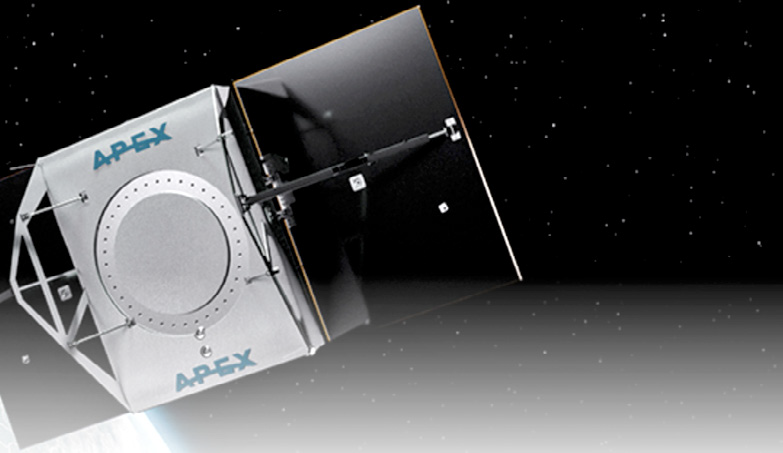
Apex is currently producing additional Aries in 2024, with current lead times of a few months.
“This selfie demonstrates that all our satellite’s subsystems are working well both individually and together. Space is not easy, and I continue to be impressed by our world-class team for pulling this off on a record time frame. At Apex, we take care of the satellite buses for our customers, ensuring they can focus on payloads and overall mission,” said Ian Cinnamon, Chief Executive Officer at Apex.
Max Benassi, Apex’s Chief Technology Officer, said, “Commissioning our first payload was a major milestone for our team, showing that we have successfully completed a full mission scope. We look forward to finishing bus-level commissioning before we help our customers a hieve what they need from their payloads.”
GMV to lead ESA’s PNT end-to-end in-orbit demo mission
The aim of this mission is to demonstrate services and develop key technologies of LEO satellites for Positioning, Navigation and Timing (PNT) by launching a small constellation of five satellites. GMV will be responsible for the complete end-to-end space mission and will lead an industrial organization that includes key partners such as OHB System AG, Alén Space, Beyond Gravity and Indra. This will open up a new way of using low orbit satellites in key markets and applications.

The European Space Agency (ESA) awarded the 78.4 million euros contract to GMV to develop key technologies and demonstrate the benefits of LEO satellites for Positioning, Navigation and Timing (PNT).
Satellite navigation has traditionally relied on satellites at MEO, but future navigation systems will adopt a multi-layer system of systems architecture employing satellites at different orbital altitudes. LEO can bring important benefits to users in terms of improved signal resiliency, robustness, and accuracy.
The signed contract includes the design and development of satellites and payloads, the procurement of launch services, the provision of a Ground-Segment-as-a-Service (GSaaS), the development of a test user receiver, system operations, as well as experimentation and demonstration of LEO-PNT services with end users.
A total of five satellites will be developed and placed into orbit. The first satellite, an initial technology demonstrator based on a 12U cubesat architecture, will be launched within 20 months from kick-off to perform initial testing. Four additional smallsats will be launched to complete the demonstration constellation by 2027.
The LEO-PNT satellites developed e- and C-band complementing the signals currently transmitted by navigation satellites such as Galileo and GPS. An innovative “LEO shield” integrity determination function, capable of assessing in real time the integrity of GNSS signals received onboard the LEO satellites and alert users in case of malfunctioning will be also demonstrated.
GMV will be responsible for the complete end-to-end space mission and will lead an industrial organization that includes OHB System AG, Alén Space, Beyond Gravity and Indra as core partners.
With a key role as space segment prime of the small satellites, OHB System AG will lead the development and manufacturing of four LEO satellites in Bremen, bringing to the project the company’s key expertise in the production of 34 Galileo satellites.
Alén Space, now part of GMV’s group since mid-2023, will provide the first technology demonstrator cubesat platforms as well as important payload components. Alén Space will also bring to the project its key expertise in new space methodologies that are considered essential for the LEO-PNT mission.
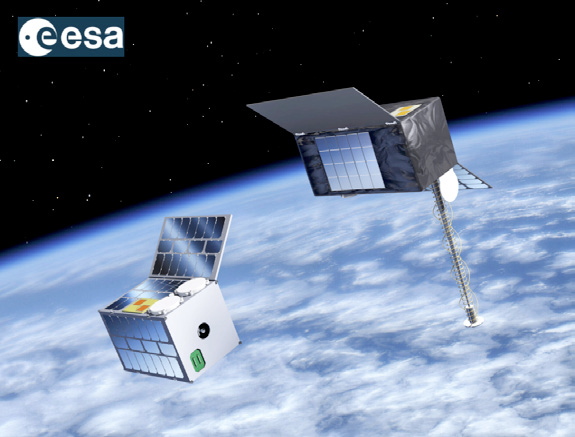
Beyond Gravity, a leading independent space equipment supplier to satellite and payload primes and launcher operators, will play a key role in the development of the PNT payloads onboard the satellites.
With strong expertise in GNSS applications in various markets, Indra will also play a key role in the project coordinating the experimentation and validation campaign that aims at demonstrating the benefits of LEO satellites for PNT for end-users’ services.
The team is completed with 14 end-user representatives and key stakeholders from different parts of the LEO-PNT value chain and with presence in key potential LEO-PNT markets such as road, rail, maritime, navigation at high latitudes and in inland waterways, indoor positioning, fishing, precise timing, IoT/asset-tracking, critical infrastructures, location- based services and 5G/6G industries.
With the LEO PNT in-orbit demonstrator (IOD), GMV is ushering in a new era that will open the door to a new generation of navigation systems. Leading a space mission from start to finish is a major commitment for GMV and represents the next logical step in consolidating the company’s position as a uropean aerospace industry.
SpaceX launches EUTELSAT 36D
On Saturday, March 30th. at 5:52 p.m., ET, the EUTELSAT 36D mission to GEO was launched by SpaceX from Launch Complex 39A (LC-39A) at the Kennedy Space Center in Florida.
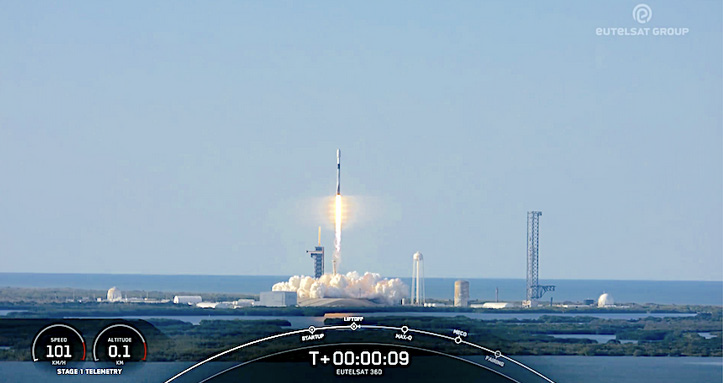
This was the 12th launch of the first stage booster supporting this mission, which previously launched CRS-26, OneWeb Launch 16, Intelsat IS-40e, O3b mPOWER, Ovzon 3, and six Starlink missions.
The payload for this mission is the Eutelsat 36D satellite, which measures 4m x 5m x 4m or the size of a small truck, according to the satellite’s manufacturer, Airbus.
The geostationary telecommunications satellite arrived in Florida on Monday, March 11th, onboard Airbus’ new BelugaXL plane, which is based on the A330- 200 platform.
About 8.5 minutes after liftoff, B1076 landed on the SpaceX droneship ‘Just Read the Instructions’ in the Atlantic Ocean. This was the 76th landing on JRTI and the 289th booster landing to date.
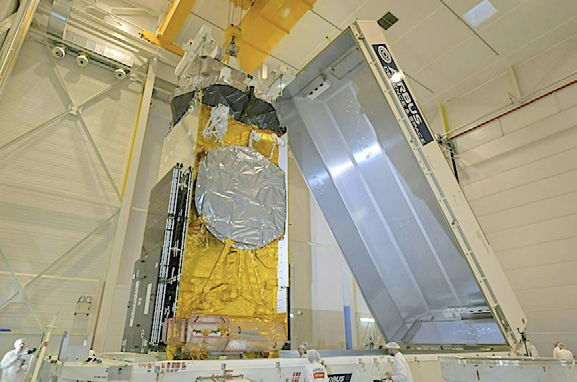
The all-electric Eutelsat 36D satellite is prepared
for transport to Florida from Toulouse, France.
Image: Airbus
In addition to “delivering over 1,100 TV channels to millions of homes” in the areas of Africa and Eurasia, the satellite “has also been selected by Airbus Defense and Space to carry its latest Ultra High Frequency (UHF) payload to support communications over the EMEA region,” Eutelsat said in a statement.
Eutelsat 36D, built by Airbus, will be replacing Eutelsat 36B at 36° East where it will provide more than 1,100 broadcast channels and other connectivity across Africa, Russia, and Europe. The satellite features 70 Ku-band transponders to enable a constant data flow to t e ground. The satellite is expected to have an operational lifetime of 15 years.
Spire Space Services and HANCOM InSpace sign agreement
Spire Global, Inc. (NYSE: SPIR) has signed an agreement with HANCOM InSpace (“Hancom”) for Sejong-2 and Sejong-3, two additional satellites, with Spire Space Services.
Under this agreement, Spire will build and operate the satellites, expanding the capabilities of HANCOM-1 (Sejong-1). Together, these satellites will form a constellation for Korea’s first three-satellite remote sensing image data service.

Hancom specializes in commercial and government applications of image analysis, including detection of vehicles, aircraft and ships, changes in roads and buildings, and pine tree death detection. The missions are focused on collecting optical imagery for applications in the agriculture sector, including landscaping applications and the expansion of its existing image analysis portfolio offerings. Hancom plans to launch and operate a constellation of up to 50 satellites.
Sejong-1, a Spire satellite carrying an optical payload for Hancom, launched in May of 2022 on the SpaceX Transporter-5 Mission from Cape Canaveral Space Force Station. It was the first commercial satellite deployed for a private South Korean company.
“Collaborating with Hancom on the expansion of their satellite constellation is a testament to the innovative spirit driving advancements in the South Korean space industry,” Frank Frulio, general manager of Space Services at Spire. “As a pioneer in deploying satellites, Hancom continues to demonstrate their leadership in the space industry, and we are thrilled to contribute to the growth of their constellation. Our Space Services team’s dedication and ingenuity shine through, ensuring an unparalleled experience for customers like Hancom, and reinforcing our commitment to delivering cutting-edge solutions in Earth Observation and beyond.“
“Collaborating with Spire Global underscores our commitment to advancing the capabilities of our satellite constellation. Sejong-2 and Sejong-3, alongside Sejong-1, mark a significant step forward in our mission to provide cutting-edge image analysis solutions. Sejong-2 will serve as an extension of Sejong-1, focusing on maritime, agricultural monitoring, and change detection, especially in urban areas, while Sejong-3, equipped with a hyperspectral imager, will leverage its spectral range advantages for applications such as calculating wildfire damage area, analyzing air pollution levels, and assessing river water quality,” said Dr. Myungjin Choi, the CEO of HANCOM InSpace. “With the integration of images from our own multispectral and hyperspectral imagers, drones, and high-performance ground cameras, we are poised to expand our image utilization portfolio even further. We anticipate that the image quality of both Sejong-2 and Sejong-3 will be as exceptional as that of Sejong-1.”
The WTA 2024 Teleport Award winners
The World Teleport Association co-winners of the organization’s Teleport Awards…
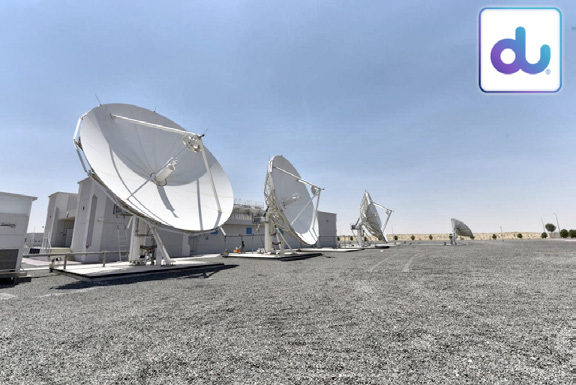
Independent Teleport Operator of the Year
du
Founded in 2006, du is a premier telecommunications entity in the UAE, offering services such as fixed line, mobile telephony, internet and digital TV to a diverse clientele. Serving as a holistic service provider, du extends its services to premium DTH channels within the UAE and the broader Gulf Cooperation Council region, offering carrier, internet exchange, and pivotal satellite solutions for broadcasters.
With a strong emphasis on user experience, du delivers robust platforms across DTH/satellite, media fiber, digital asset management and OTT realms. Dedicated to fostering client growth, du champions advanced technological integration, process optimization and consistent viewer satisfaction. Utilizing its cutting-edge satellite and terrestrial capabilities, du promises unparalleled reach. By adeptly navigating the complexities of the dynamic broadcast and media landscape, du empowers broadcasters and content creators to adapt and excel in the face of evolving consumer trends.
In the past year, du’s crowning achievement was being chosen by Eutelsat, a leading satellite operator, for broadcast services across the UAE. This collaboration resulted in a multi-transponder contract with Eutelsat’s prominent 7/8° West orbital position, a primary broadcasting hub for the Middle East and North Africa, reaching approximately 60 million homes with over 1,000 channels. Eutelsat has since extended its alliance with du, enhancing Direct-to-Home satellite services throughout the MENA region.

Sergey Raber
Teleport Executive of the Year
Sergey Raber, COO and Director of Operations, AXESS Networks
Sergey Raber has served as COO and Director of Operations at AXESS Networks’ German office in Ruppichteroth for 16 years. He joined CeTel as a Project Manager in 2006 prior to its acquisition by AXESS Networks. In his current position, Mr. Raber is responsible for management of teleport operations, pre-sales and engineering, CRM system optimization and M&A assistance, in addition to expanding the company’s maritime support and integration of new services as well as its automation and orchestration services in the NOC. He was responsible for developing AXESS Networks’ in-house Monitoring System and its in-house Helpdesk System.
Before joining AXESS Networks, Mr. Raber worked as a scientist, conducting research in the field of Satellite Telecommunications at GMD/Fraunhofer FOKUS in St. Augustin, Germany. He participated in multiple international scientific projects during his 9 years as a researcher.
Mr. Raber began his career as an Engineer at Optima JSC in Moscow, Russia, while completing his studies at the Moscow State Institute for Electronics and Mathematics. He also later received a Masters of Business Administration from the University of Wales in 2013. Mr. Raber has provided his technical insights in several publications, including Satellite ISP Market, Future Mobile Communication Networks and multiple WTA research reports, He has also collaborated on training, certification, publication and study programs with multiple major industry players, including Newtec, SES, Arabsat, Eutelsat, Hispasat, Comtech, UHP, Vertex and Kratos.
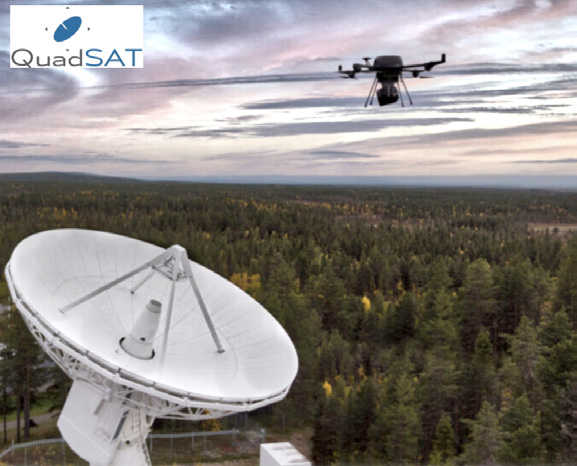
Teleport Technology of the Year:
QuadSAT System
QuadSAT’s drone-based system provides users with flexible and accurate antenna testing and calibration. It delivers cost- and time-efficient testing and verification of RF equipment, without compromising on quality. The mobile system comprises a drone, a custom-designed payload and Quadsat’s proprietary pre- and post-flight software. Using drones to perform these kinds of tests is drastically reducing complexity, making it possible to test satellite ground stations anywhere, all while ensuring a high level of accuracy, something not previously synonymous with on-site testing.
Tests are fully automated, flexible and location independent and a broad range of testing missions can be undertaken, anytime, anywhere, depending on user requirements. This is making high quality antenna testing and diagnostics accessible, helping the satellite industry deliver seamless connectivity, reduce the risk of interference and keep customers connected. The system ensures repeatability, control over the drone during measurements, ease of operation and data delivery in a uniform format.
The Quadsat solution allows teleports to quickly validate their antennas, optimize its performance and obtain uplink approval with satellite operators. Additionally, periodic monitoring of antenna performance can result in reduced power consumption and maximized throughput for antennas.
Interstellar Technologies signs agreement with JAXA
Interstellar Technologies Inc. has established a basic agreement, signed on March, 2024, with the Japan Aerospace Exploration Agency (JAXA), regarding the procurement of launch transport services.
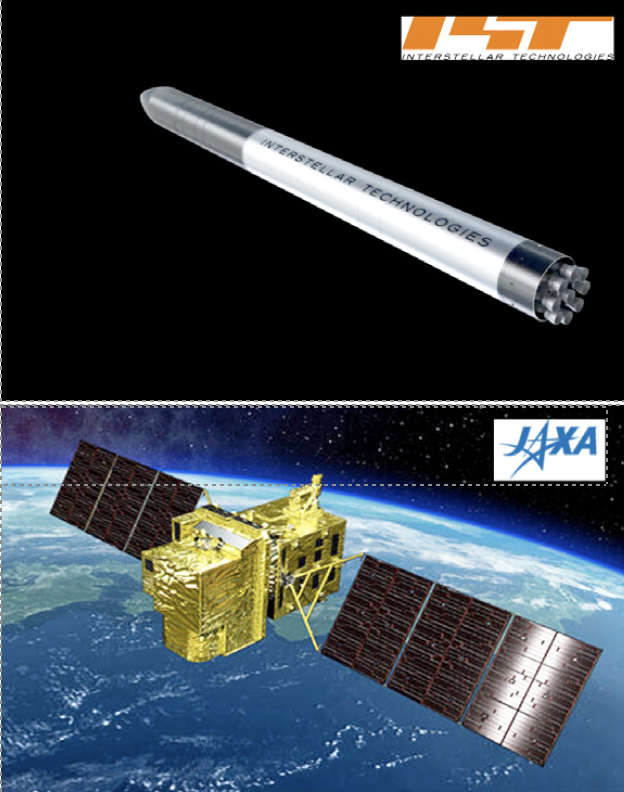
This agreement is designed to select private-sector entities capable of launching satellites developed under JAXA’s small satellite missions, thereby advancing the commercialization of space transportation services by startups and other entities through launch contract procurement.
Notably, the Japanese government has proposed a policy initiative (*1) to secure approximately 30 domestic launch opportunities annually, using both government and private rockets, by the early 2030s. In light of this initiative, Interstellar will continue to further autonomous domestic space access through the ongoing development of the rocket ZERO, which integrates reliability and cost competitiveness.
This agreement is established in accordance with JAXA-SMASH (JAXA – Small Satellite Rush Program), a program aimed at expanding transportation and small satellite missions. Privately selected transport services under this program will launch small satellite missions publicly solicited by JAXA(*2).
Interstellar has been designated as “Launch Operator A,” receiving priority for future procurement contracts.
In line with the new Space Basic Plan approved by the Japanese Cabinet in June 2023, the Japanese government targets the launching all domestic satellites, regardless if government or private, using Japan’s flagship rockets or private rockets, starting from fiscal year 2028. This initiative also aims to capture overseas demand.
In September of 2023, Interstellar was selected for the “Small Business Innovation Research (SBIR Phase 3)” by the Ministry of Education, Culture, Sports, Science and Technology, encouraging research and development by startups and others (*3), with governmental support to be provided for both research and development and launch contract procurement to achieve early realization of affordable, frequent private space transport services domestically.5
ZERO is a smallsat launch vehicle designed to target the growing market for small-sized satellites in recent years. Building on the knowledge gained from the successful launch of the private suborbital launch vehicle MOMO, the first of its kind in Japan’s private sector, Interstellar is progressing toward the first launch of ZERO.
ZERO’s space transportation service distinguishes itself with competitive pricing—at less than 800 million JPY per launch (in mass production)—made possible through an integrated development and manufacturing process.
Another key strength is its flexibility to provide customized launches tailored to the rising needs of satellite companies. For satellite companies in Japan, Asia, and Oceania, proximity to the launch site ensures convenience, reducing launch-related time and costs and enhancing overall value.
With an eye on recent trends and the demand both locally and globally, ZERO is enhancing its capacity to launch satellites of up to 800 kilograms into LEO. This strategic contributes to the establishment of an independent domestic space transportation service. Simultaneously, it positions Interstellar to establish a firm presence in the Asia-Oceania and European markets.
Takahiro Inagawa, CEO of Interstellar Technologies, said, “Space technology’s complexity and the limited opportunities for challenges have hindered the expansion of space utilization and industrial growth. JAXA-SMASH presents an innovative opportunity for demonstrating cutting-edge technology with satellites to break through these limitations. We are honored to be part of it, bringing our space transport services to the table. Looking ahead, we anticipate a substantial increase in space transport opportunities domestically. However, we’re all hands on deck, pushing ahead with technology demonstration and business development, ready to seize the day in this new era.”
ZERO: Specifications
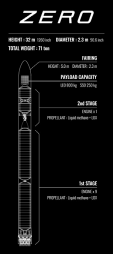
Height: 32m
Diameter: 2.3m
Wet mas: Weight: 71 ton
Propellant: Liquid Methane (Biomethane)
Oxidizer: Liquid Oxygen
Number of Engines: 1st Stage: 9,
2nd Stage: 1
Payload Capacity: LEO 800kg / SSO 250kg
(Future Maximum Capacity)


